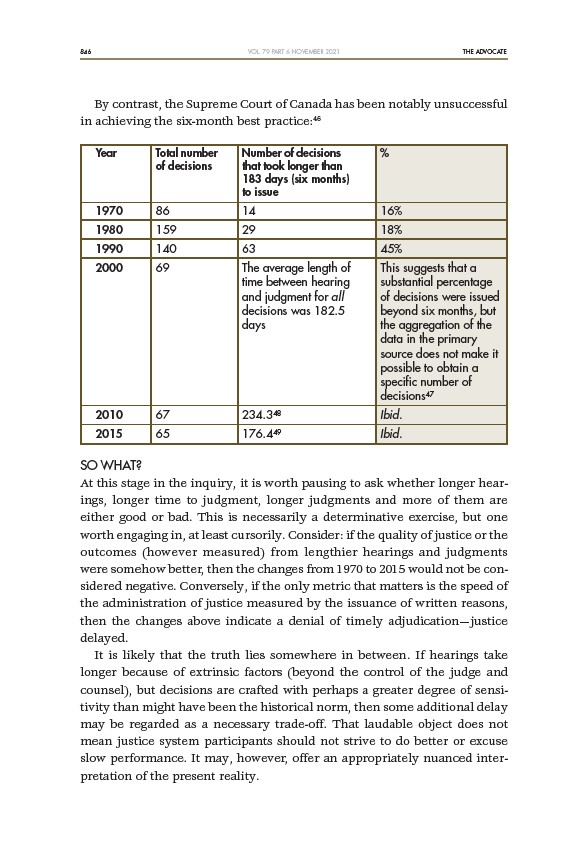
846 THE ADVOCATE
VOL. 79 PART 6 NOVEMBER 2021
By contrast, the Supreme Court of Canada has been notably unsuccessful
in achieving the six-month best practice:46
Year Total number Number of decisions %
of decisions that took longer than
183 days (six months)
to issue
1970 86 14 16%
1980 159 29 18%
1990 140 63 45%
2000 69 The average length of This suggests that a
time between hearing substantial percentage
and judgment for all of decisions were issued
decisions was 182.5 beyond six months, but
days the aggregation of the
data in the primary
source does not make it
possible to obtain a
specific number of
decisions47
2010 67 234.348 Ibid.
2015 65 176.449 Ibid.
SO WHAT?
At this stage in the inquiry, it is worth pausing to ask whether longer hearings,
longer time to judgment, longer judgments and more of them are
either good or bad. This is necessarily a determinative exercise, but one
worth engaging in, at least cursorily. Consider: if the quality of justice or the
outcomes (however measured) from lengthier hearings and judgments
were somehow better, then the changes from 1970 to 2015 would not be considered
negative. Conversely, if the only metric that matters is the speed of
the administration of justice measured by the issuance of written reasons,
then the changes above indicate a denial of timely adjudication—justice
delayed.
It is likely that the truth lies somewhere in between. If hearings take
longer because of extrinsic factors (beyond the control of the judge and
counsel), but decisions are crafted with perhaps a greater degree of sensitivity
than might have been the historical norm, then some additional delay
may be regarded as a necessary trade-off. That laudable object does not
mean justice system participants should not strive to do better or excuse
slow performance. It may, however, offer an appropriately nuanced interpretation
of the present reality.